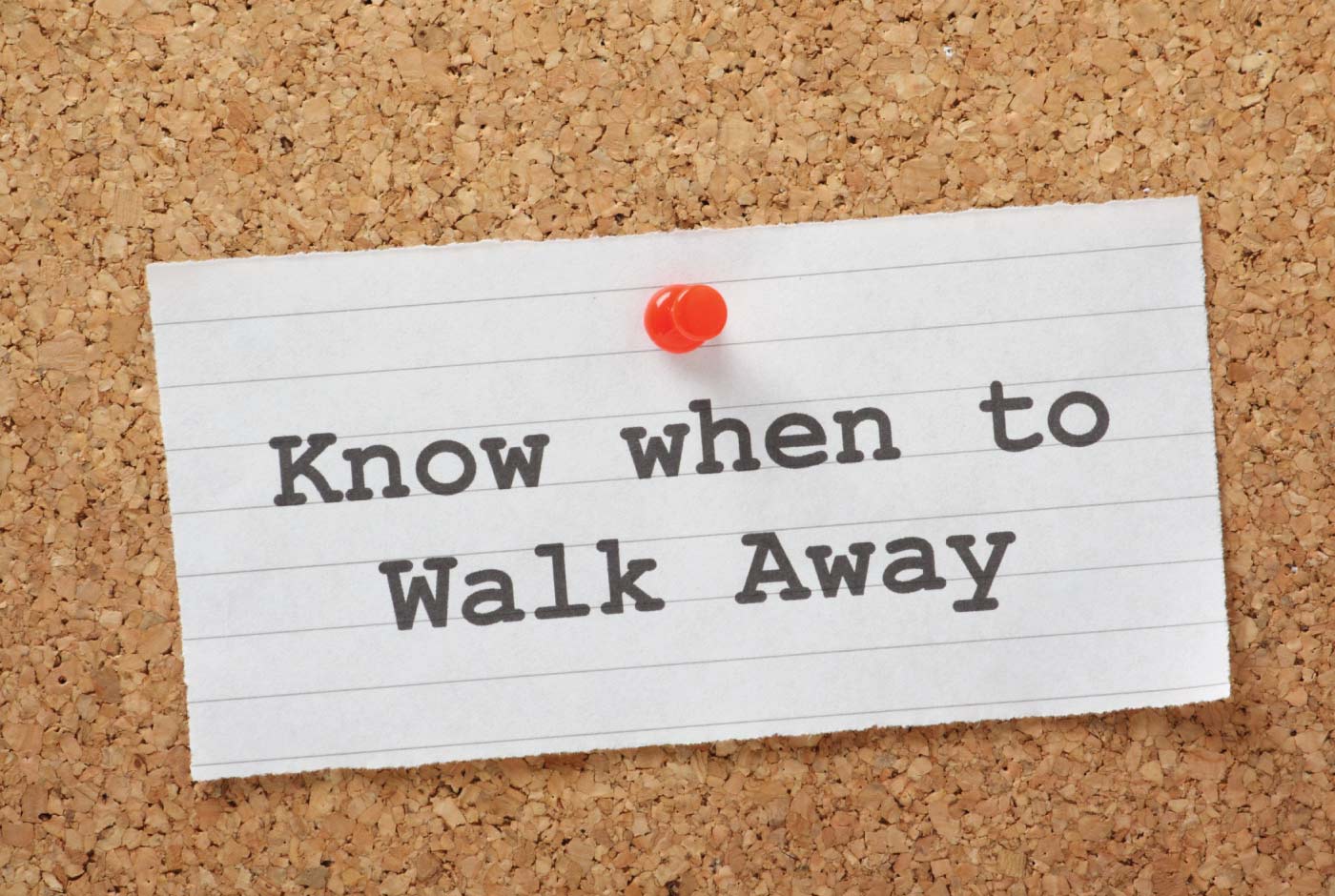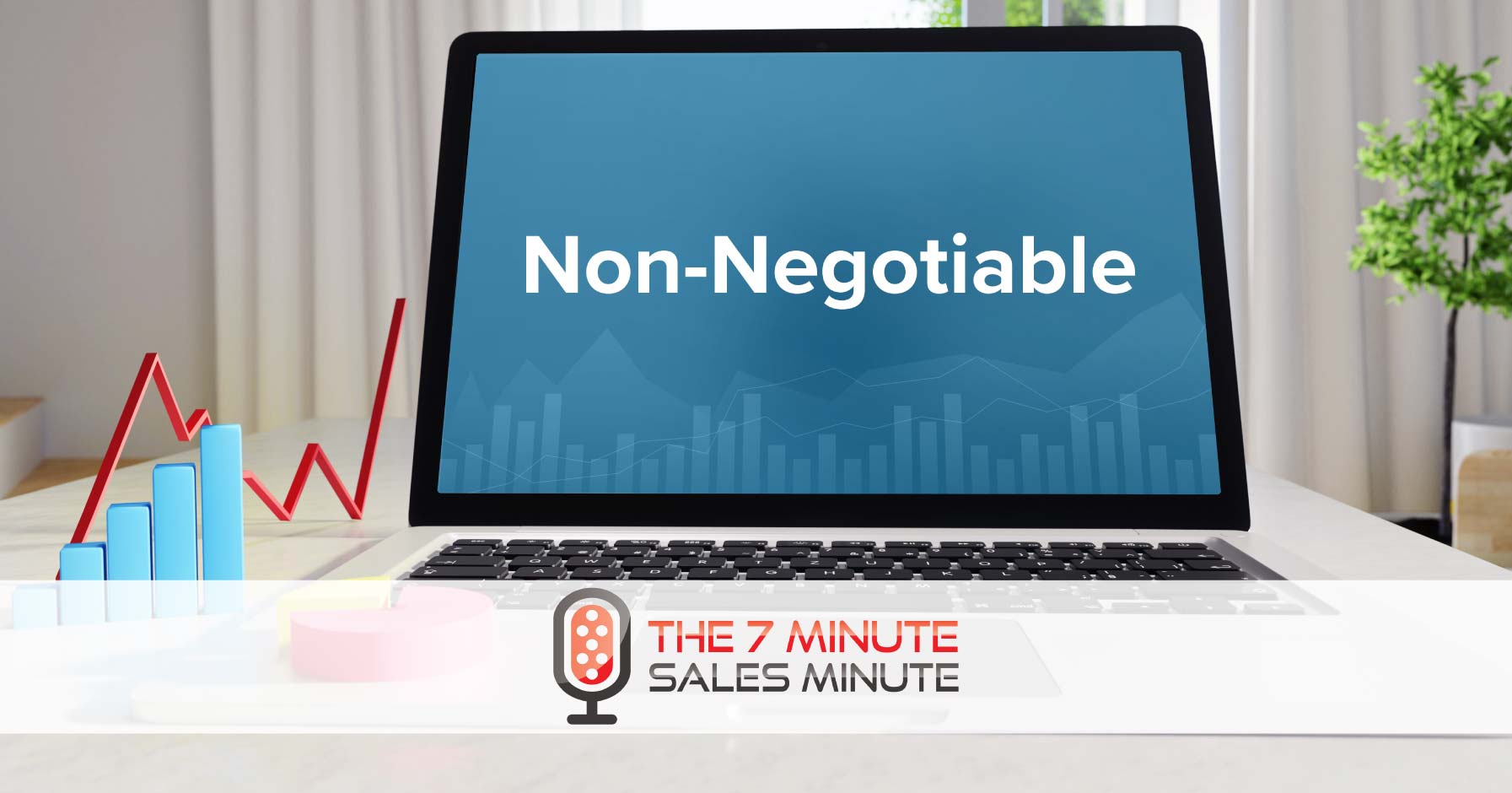
This week, the guys drop some gems on you.
They talk about the value of keeping your pipeline full and the dangers of turning your prospects into white whales.
How can you follow-up relevantly without being needy?
Listen on!
Read the full transcript
Scott: I’m Scott Fishman.
Jon: I’m Jon Dwoskin.
Scott: And this is The Seven Minute Sales Minute.
Jon: Welcome, everybody.
Scott: Hey, Jonny, what’s going on?
Jon: Hey, Scott, how are you?
Scott: I’m doing good. Happy Sunday, man.
Jon: You too. You too. It’s a good Sunday.
Scott: It is. Beautiful day. I think we both slept in way later than we expected.
Jon: Yeah, good day, good sun. Good fun day.
Scott: Yes. So what are we talkin’ about today, man.
Jon: Let’s talk about how to stop chasing clients that are low probability and how to replace them with ones that are high probability that we can fill our pipeline and grow our business.
Scott: I like that. Don’t chase ’em, replace ’em.
Jon: Don’t chase ’em, replace ’em. Well said. So let’s give everybody some tips that really just kind of, you know, they can put into their game starting tomorrow.
Scott: Okay, good.
Jon: Or today, whatever they want to do.
Scott: Exactly.
Jon: Right.
Scott: First and foremost, I think one big thing is, we talk about this as a numbers game, right?
Jon: Absolutely.
Scott: If we only have one or two prospects that we’re following up with, we’re going to drive them crazy ‘cuz we’re gonna call them nonstop, email them nonstop, stop by their office nonstop, send them correspondence via mail nonstop because it’s the only thing we have to play with. It’s our only toy.
Jon: Right.
Scott: Rather than putting that energy towards those couple of clients and prospects, let’s actually put that energy towards more prospecting-
Jon: Right.
Scott: And getting more people into our pipeline here.
Jon: I mean, that’s so important and it’s so interesting. I find sales people, no matter if you are new or have been in the business a long time, business development and finding new prospects is always the last thing that people do. You know, maybe when you’re first starting off, you’re hungry and you’re doing it, but for some reason people don’t do it. So, you know, you gotta always be prospecting, and if you’re always prospecting then you don’t have to settle for the low probability desperate chase of those prospects just ‘cuz they’re in your pipeline and they’ve been in your pipeline for God knows how long and they’re never gonna amount to anything. But if you don’t prospect, you’re always desperate.
Scott: Right. And this way, if you have more people in your pipeline, you can kind of have the pick of the litter, so to speak.
Jon: Right. It’s kind of like Jack Welsh, which he every year would get rid of the bottom ten percent of all the employees. I think it was Jack Welsh who did that. So if not, I apologize Jack, but I think it was. But it’s the same thing with your pipeline. Every month, every quarter, every year. Be looking at it and chop off the bottom ten percent. It’s not worth your time to chase people who don’t understand the value of what you bring to the table and how you can help them accomplish whatever they wanna accomplish.
Scott: Right. I love it.
Jon: Yeah.
Scott: And when we’re following up with someone and we’re doing it and giving those “Hey, just checking in,” phone calls every single day, we’re acting desperate.
Jon: Correct.
Scott: Clients can smell that. Prospects can smell that. When we’re calling them non-stop. They’re, “Gosh, this guy really must need a sale” or “Oh it’s the last couple days of the month. This guy really, really has to get us on board”.
Jon: Right.
Scott: “I’m gonna mess with him and tell him I want a better deal, or “I’m gonna mess with him and send him to voicemail non-stop.”
Jon: Yeah.
Scott: They know that. They can feel that. And they don’t wanna work with someone who isn’t confident and is desperate.
Jon: Right. And they also wanna work with somebody who’s not only confident but who is very clear in what they do. And so I think one of the things that most salespeople need to take to the next level is how they message and give clarity to the client or the prospect and exactly what they do for a living. Sometimes, that message gets lost. So, if we can articulate … The better we can articulate to a client or a prospect exactly what we do … If they’re not biting, if we’re not attracting them to do business with us, then it’s pretty cut and dry. If they don’t … It makes it easier for us to cut bait if they don’t understand the value that we bring to the table.
Scott: Yeah. If our service or our product is not going to be something that’s gonna benefit them, why are we trying to fit a square peg into a round hole.
Jon: Right.
Scott: It doesn’t work.
Jon: Right. It does not work.
So, I wanna just go back to something you were talking about as far as calling prospects and clients on a daily basis. Initiating those conversations, initiating and having those meetings, we’ve got to have, as salespeople, something important and relevant and real-time, of rich content to communicate with them about. Whether it’s something in the market, the industry, the company, it doesn’t matter. Anything that’s newsworthy. To be able to call and say, “Mr. and Mrs. Client, XYZ is happening. I just read about X, Y, and Z. This is what is projected, and this is how it applies to you. And this is why, based on how it applies to you, this is what I think you should do. This is how I can help fill that gap.”
Scott: Yeah, and I think something that goes even further sometimes is when it has no bearing on your business.
Jon: Right.
Scott: And is not related to anything that is part of your transaction. It could be about the type of dog they have, a sport they love, something like that. They love that when you’re just checking in, you give them a bit of knowledge or an article, or “I saw a coupon that you might enjoy”. Anything. They love that stuff.
Jon: Spot on.
Scott: And it keeps you in front of them for a reason instead of just giving that “Hey, just followin’ up” phone call.
Jon: What you’re talking about is building a relationship and growing your business through understanding the nuances of a lot of stuff in their business and in their life. You know, whether, like you said, for their dog or a coupon that they may enjoy. That’s having a relationship with someone and knowing what makes them tick. They’re more apt to do business with you if that’s the case.
Scott: Yeah.
Jon: Right.
So what are some other tips? What are some other things that people should be thinking about so they don’t have to chase and then they can replace?
Scott: Okay. One big thing that, when you’re working with a client, I always talk about, keeping them corralled. Like you’re saying, create a relationship, keep that relationship going for a valid reason. But what I mean by keeping them corralled is … Remember “Of Mice and Men”?
Jon: Oh sure.
Scott: So, you know, Lenny had that mouse, and he held that and he held it so tight and he stroked it so hard that he snapped its neck or he killed it. So I always think of clients in the same way sometimes. It’s like, if you hold it too tight and you squeeze and you work so hard on that client, they can feel that and their eyes are eventually gonna pop out of their head.
Jon: Right.
Scott: Like you’re squeezing them too hard. So keep them corralled by keeping the relationship strong, and keeping the relationship alive without the heavy petting, without pushing them so far over the edge.
Jon: That’s smart, yeah.
Scott: That’s one thing that I’ve always trained people on, and I’ve always subscribed to that myself.
Jon: Yeah. I think that’s really important because it forces you to step back and just kind of rethink your own strategy on a person-by-person basis. Some people require every other day follow-ups. Some people require once a week follow-ups. Some people require … So you really gotta customize your follow-up. And we’ve talked about sequence marketing where everything is a little bit more boom, boom, boom. But, you know, depending on what the client needs, that’s how you should be chasing them. But the ones that don’t come back a little bit, you gotta know when to walk away. You gotta know when to walk away and just not be a prisoner of hope.
Scott: I like that, yes. You and I actually talked about that a little bit before we hit the record button.
Jon: Right.
Scott: I call it Moby Dick. Don’t create the “White Whale”.
Jon: Right.
Scott: Don’t just have that client that you’re gonna work so hard to get that is ultimately just gonna kill you and cost you fifteen other customers because you wanted that one so badly.
Jon: Right.
Scott: And then you know that one client is always gonna be the biggest pain in the butt as it is –
Jon: Right.
Scott: Because they made you work that hard to get them.
Jon: Right. Yeah, I was telling Scott a story about somebody who had reached out to me and wanted to use my services as an executive advisor business coach, but I knew that it wasn’t a fit to work with them. I knew they were looking for something that was more or less something I just didn’t feel I could help them with. They really weren’t in a position to grow or where they wanted to grow. But yet I still was following up with them. They’re in my sequence marketing, but I was following up with them. And I just didn’t necessarily see a reason to because even if they wanted to do business with me, I wouldn’t accept the assignment because I know that I couldn’t help them. And so I just kind of thought “there’s no point”. I don’t even wanna chase the business ‘cuz if they did come to me, I would disappoint them by saying “I’m sorry, I can’t help you.”
And then it would send – well, it would send the wrong message. They would say, “Well then why do you keep sending us all of these personal emails?”
Scott: Right.
Jon: “Hey, here’s an article. This is how this may apply to you. I mean I could out of the goodness of my heart, but it’s just … I was sending this to them as a prospect, but really, they’re no longer a prospect in my book.
Scott: I feel like I pretty much do that do myself once every quarter.
Jon: Yep.
Scott: Where I have a nightmare client that I just, I have to have, and I push and I push and I push. And they finally say yes, and the nightmare continues.
Jon: Yeah.
Scott: And I brought it all on myself when I could’ve just let it go.
Jon: Right. And we choose … As salespeople I think sometimes we forget that we can choose our clients and we have control over our clients, but if we don’t … Because a lot of salespeople don’t like to prospect, and they get stuck in this realm of people that are kind of in their current rolodex of people that they’re calling. They know that they’re gonna have to go back into the trenches and start doing some prospecting, and they’d rather chase business that isn’t real. It’s a mirage.
So, if you can take anything from this podcast today, take an honest look at your pipeline and get rid of the bottom twenty percent of the people that aren’t responding to you, aren’t gonna do business with you, and frankly the people that you don’t wanna do business with because nobody should wanna do business with a-holes. I have a clie-
Scott: They still do business with me.
Jon: I have a client. They have a rule on their board when you walk in their office. One of their rules is “no a-holes”. My point of saying that is the desperate people sometimes that we find ourselves chasing because it’s this challenge that we just wanna win the game, they end up taking a ton of time, they’re not fun to work with, they take advantage of you. You have the choice not to work with those people.
Scott: Absolutely.
Jon: Yep.
Scott: One last thing, and we talked about the relevant follow-up, is after a while, we tend to become wallpaper. If you’re calling a client every single day, they tend to get comfortable. It’s not even a bother to them that you’re calling them every single day. It’s just swiping to the left on their phone to get rid of you. It’s just, “Hey, Scott’s calling me. Time for me to not answer his call one more time.”
Jon: Right.
Scott: And after a while, they don’t listen to your voicemails, they don’t do anything, so, you know, don’t become wallpaper, as they say.
Jon: Now that being said, I just wanna say one thing too. And I don’t know if this is gonna contradict what we’re talking about. But I’m a big believer that you really gotta have fifty touches with a client in order to make some type of impact. Whether that’s calls, liking LinkedIn, liking pictures throughout social media, sending emails, follow-up calls. Put in the effort. But you gotta decide whether its fifty touches, twenty-five touches, seventy-five touches. Sometimes people go to a hundred or three hundred touches if they’re chasing people for years. You gotta decide where is the point that there’s gonna be no return on your time because all we have is time, and with that time that we have, we wanna make more money. So make sure that you’re spending it wisely. Having a clear message but doing what you need to do to connect with the client, but know when to cut bait.
Scott: Yeah, and I don’t think that was contradictory at all to what we’re talking about. Make the touches but make the touches have a purpose.
Jon: Yeah.
Scott: Plain and simple.
Jon: Well said.
Scott: There you go.
Jon: Boom. Drop the mic. That was great.
Scott: Thank you, everybody.
Jon: Have a great day.




